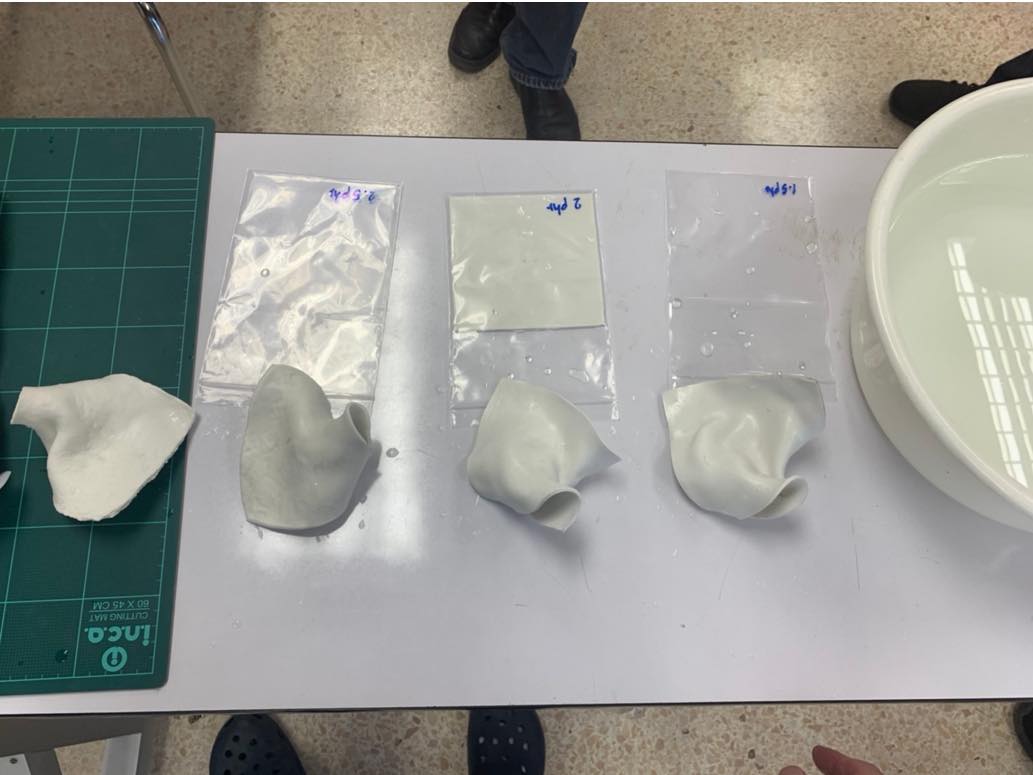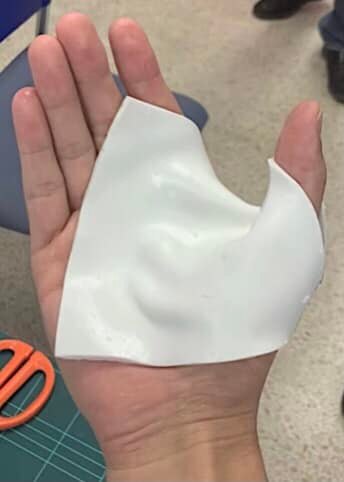In currently, the thermoplastics for producing splints is still imported from overseas. It is cause of high production costs and patient with low-cost are limited in choosing splint for treatment. Moreover, there are some dissatisfactions of using commercial thermoplastic splint. Therefore, the researcher developed a newly low-cost thermoplastic to replace the traditional commercial thermoplastics in the market.
Comparison of usability satisfaction of the newly developed low-cost thermoplastic splint and commercial thermoplastic splint
This research is divided into projects:
1.1 Project I is a comparison of satisfaction between the newly developed low-cost thermoplastic splint and commercial thermoplastic splint in occupational therapist.
- The researcher invited to participate in the research through social media and poster.
- The researcher informed the research details to occupational therapist. If they will participate the research, they signed on the informed consent.
- All participants were randomly divided into two groups (29 in each group): experimental groups received the newly developed low-cost thermoplastic and a control group received the commercial thermoplastic.
- The researcher made an appointment with the participants in data collection for ~4 hours.
- All participants made the splints 3 type: finger splint (~30 min), thumb spica splint (~45 min) and resting splint (~45 min). They were allowed to rest for 15 minutes after finishing each splint. The order of making 3 splint type were random for avoiding fatigue effect.
- The participants answer questionnaires online for 15-20 minutes after making the splints 3 type.
- 10-12 participants in experimental groups were randomly interviewed with in-depth for 20 minutes.
1.2 Project II is a comparison of satisfaction between the newly developed low-cost thermoplastic splint and commercial thermoplastic splint in patient with hand, wrist and finger injury and using splint.
- The researcher contacted the hospital that is interest to participated the research. If the hospital needs the human research ethics, the researcher asks them before collecting data.
- The researcher invited to participate in the research through social media and poster.
- The researcher informed the research details to patient with hand, wrist and finger injury and need splint. If they will participate the research, they signed on the informed consent.
- All participants were randomly divided into two groups (53 in each group): experimental groups received the newly developed low-cost thermoplastic splint and a control group received the commercial thermoplastic splint.
- All participants received a splint depending on group and pathology. The occupational therapist check using splint and safety. After that, the participants wear a splint for 3 days.
- The participants answer questionnaires online for 15-20 minutes after wearing a splint for 3 days.
- 10-12 participants in experimental groups were randomly interviewed with in-depth for 20 minutes.
Benefit
- To know satisfaction on the newly developed low-cost thermoplastic splint compared with commercial thermoplastic splint in occupational therapist.
- To know satisfaction on the newly developed low-cost thermoplastic splint compared with commercial thermoplastic splint in patient with hand, wrist and finger injury and using splint.
Target group
Occupational therapist and patient with hand, wrist and finger injury and using splint.
Impact
The result of research will be data for utility the newly developed low-cost thermoplastic splint in clinical-based and will use to develop the thermoplastic splinting material in the future.
Continuity and Duration
This research is operated from 1 April 2022 and 31 October 2023. The researcher team have a progress report monthly.
Collaboration or Network
Rubber Technology Research Centre developed the newly developed low-cost thermoplastic. In laboratory tests, its feature is not different from commercial thermoplastic splint such as, mouldable setting time and strength, but it is less irritating to the skin. After that, it was sent to Faculty of Physical Therapy, Mahidol University for clinical testing.
Rubber Technology Research Centre, Mahidol University
Faculty of Associated Medical Sciences, Department of Occupational Therapy, Chiang Mai University
Faculty of Medicine Vajira Hospital, Navamindradhiraj University








